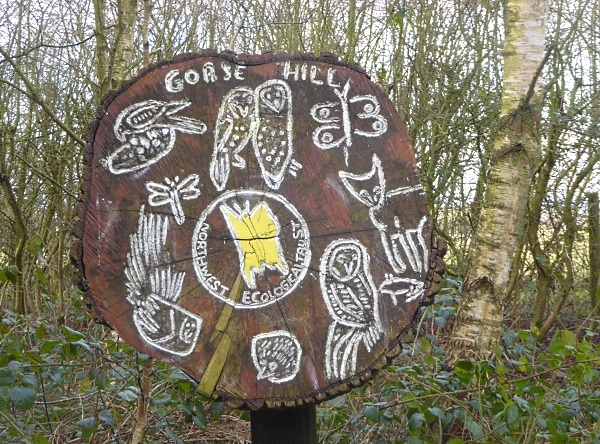
From Aughton Park station we headed westwards up Long Lane, occasionally stopping to look at interesting things in gardens – a tiny bird’s nest up a bare tree, a diorama with model woodland birds and animals in the driveway of the Hillcroft Care Home, yellow Witch Hazel in bloom amongst the leaves of a pale evergreen shrub, a clump of very dark Hellebore and this lovely early pink Camellia.
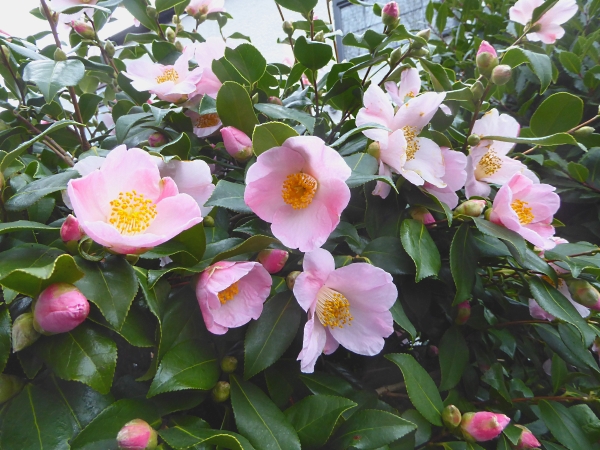
We were half an hour early at the main entrance, so we walked around the paths by the orchard. There were bat boxes high in the trees, what looked like a Pussy Willow just starting to break its buds, two Buzzards and a Kestrel overhead and a Siskin picking the tiny seeds from a Birch cone. There were Hazels all along the hedgerows, shedding pollen from the long yellow catkins as we brushed past.
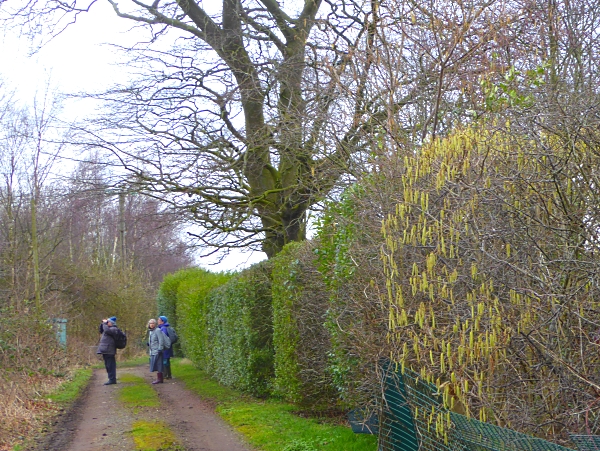
Gorse Hill is a nature reserve managed by the Northwest Ecological Trust and in 2010 it won one of the Queen’s Awards for Voluntary Service. In recent years they have made a feature of their Snowdrops, and today was their Snowdrop Festival. Although the woodlands weren’t exactly carpeted with them, there were certainly plenty of clumps along the edges of the paths in Cabin Woods.
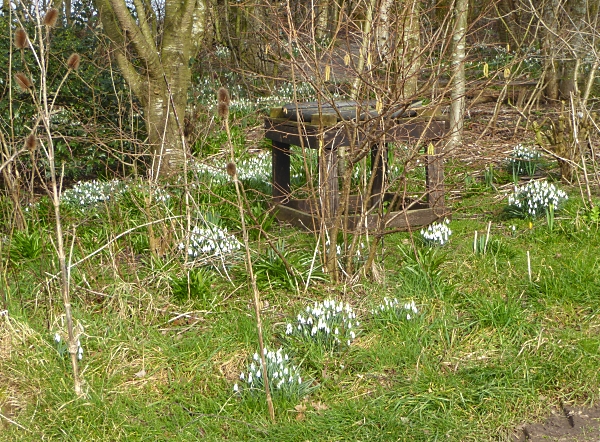
We sat in the sunshine on the picnic benches by Seldom’s Pond and watched the little birds coming to the seed and nut feeders. The usual Blue Tits, Great Tits and Coal Tits, but also a Dunnock on the ground, a party of pink and black Long-tailed Tits and three or four Tree Sparrows, which are quite scarce locally.
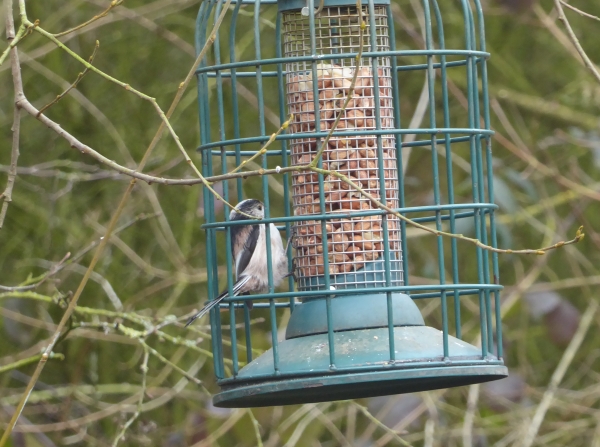

Signs told us that Snowdrops were also sometimes called “the snow piercer” and the first part of the scientific name Galanthus nivalis comes from the Greek words for “milk” and “flower”, while the second is Latin for “of the snows”.

There were also Primroses coming into flower and Hawthorn leaves breaking out in a few sheltered spots, our first of the year.
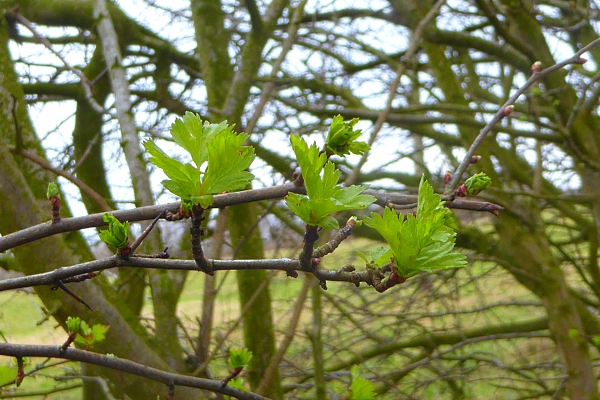
Many trees there have hanging name labels, and one unassuming shrub bore a sign saying it was a Wayfaring Tree Viburnum lantana. Hooray! We have never seen one, and it might be the only one on Merseyside. It was in our I-Spy book two years ago but we couldn’t tick it. The Wirral Wildlife Trust ranger told us that there were none in Cheshire, and that they only grew on the chalk in south-east England. There is nothing particular to see on this uncommon tree now, just bare brown twigs, but it will have white flowers and red berries (and it supports a number of moths) so we will have to come back for it later in the year. Then we sat in the sun on the edge of Five Acre field, looking at the view towards Southport, and hoping that one of the resident Yellowhammers would turn up. None did. Then we walked around by the northern edge back to Long Lane. The Starlings on Aughton church tower were screaking at a passing Buzzard.

Public transport details: Train at 10.17 towards Ormskirk, alighting Aughton Park at 10.45. We missed the 2.40 back to Liverpool, so got the 2.45 one stop outwards to the terminus at Ormskirk, then sat on the same train as it made the return journey at 3.07, arriving Liverpool Central 3.38.
